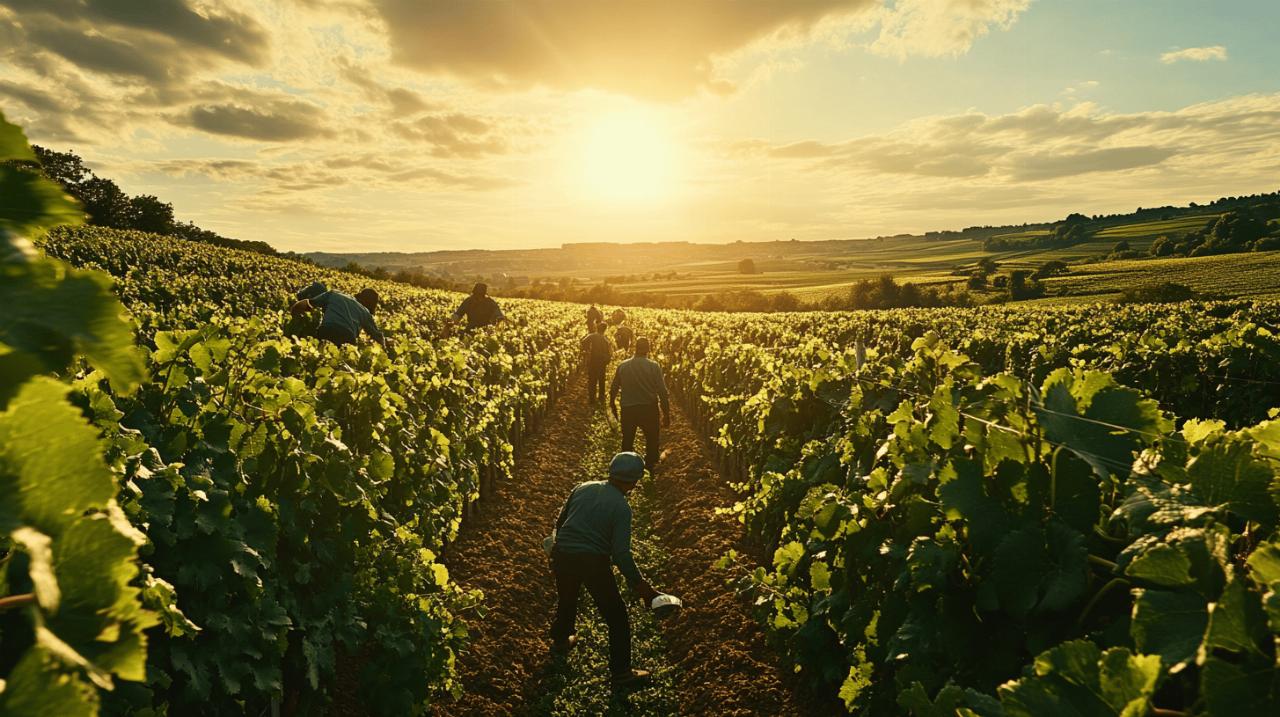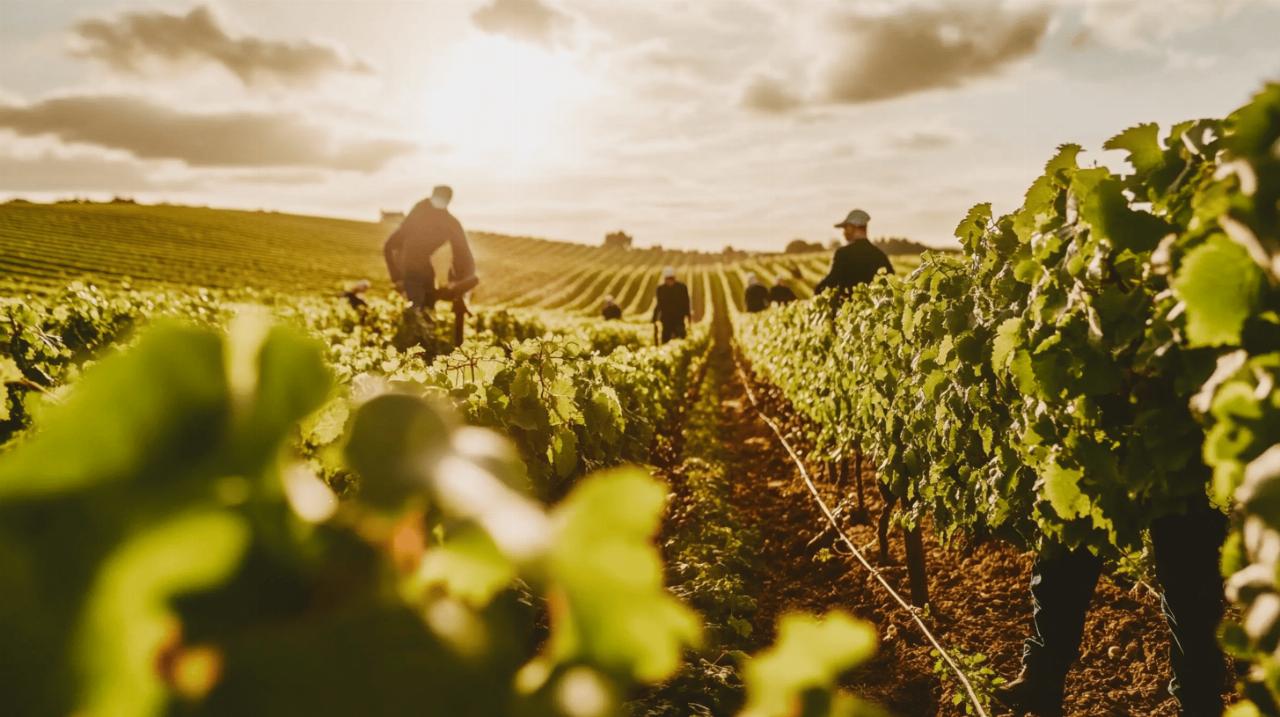How Champagne Wholesalers Transform Luxury into Accessibility: From Elite Tipple to Everyday Celebration
In the world of sparkling wines, few names carry the weight and prestige of Champagne. This effervescent elixir has journeyed from the exclusive tables of French royalty to become an accessible luxury for millions around the globe. Behind this remarkable transformation stands an often-overlooked group of market players: champagne wholesalers, who have masterfully bridged the gap between exclusive luxury and everyday indulgence.
The democratisation of bubbly
Once the preserve of monarchs and aristocrats, champagne has undergone a fascinating evolution in its social positioning. The historical development of champagne from a still, acidic wine in 17th century northeastern France to today's beloved sparkling wine represents one of the most successful luxury transformations in gastronomy. What began as an unpredictable, fizzy curiosity enjoyed at the court of Louis XIV has become what many experts now describe as an affordable everyday luxury, comparable in accessibility to dry aperitif sherries but retaining its aura of sophistication.
Breaking Down Price Barriers for the Masses
Champagne wholesalers have played a pivotal role in making this luxury more attainable without diminishing its prestigious image. By strategically managing distribution networks and fostering relationships with producers, they've created a market where champagne can be found at varying price points. While some bottles command extraordinary prices—with premium selections fetching over €10,000—the industry has successfully established entry-level options starting around €15. This price diversity means champagne can be both an aspirational purchase and an accessible treat, transforming it into what industry insiders call an egalitarian luxury, available in supermarkets and fine wine establishments alike.
From royal courts to corner shops: the evolving journey
The story of champagne's journey to British tables illustrates this democratisation perfectly. Historical factors created the perfect conditions for champagne's rise in popularity: the declining interest in German wines, spirits being considered too strong following the Napoleonic Wars, beer deemed too vulgar for polite society, and fortified wines appearing too dark and heavy. Combined with the rise of the middle class and increasing urbanisation, these factors created fertile ground for champagne to flourish. By 1870, champagne had firmly established itself as a social marker in Britain, with wholesalers cleverly positioning it as a 'Dinner Champagne' suitable for women and requiring no decanting—practical selling points that broadened its appeal beyond formal celebrations.
Distribution networks and marketing strategies
The accessibility of champagne today owes much to sophisticated distribution systems that connect French vineyards to global markets. Champagne wholesalers have constructed elaborate networks that ensure bottles travel efficiently from production houses to consumers, preserving quality while managing costs.
Clever supply chain management for maximum reach
Modern champagne wholesalers employ innovative logistics solutions that would astonish the early pioneers of the industry. Dom Pérignon, who worked tirelessly on improving corks and glass quality, would likely marvel at today's supply chain efficiencies. The contemporary distribution approach focuses on minimising handling while maximising reach, allowing champagne to arrive in pristine condition whether at exclusive wine merchants or mainstream retail outlets. This widespread availability has fundamentally altered consumption patterns, transforming champagne from an occasional indulgence to a more regular pleasure for many wine enthusiasts who now approach it as a wine to be scrutinised and appreciated like any other.
Brand positioning tactics that shift perceptions
Marketing has been instrumental in reshaping public perception of champagne. Wholesalers have worked closely with champagne houses to create powerful brand associations that resonate with consumers. These partnerships connect champagne brands with compelling cultural images—Bollinger with James Bond, Moët with Hollywood glamour—creating emotional connections that transcend the product itself. The champagne industry understood early the importance of agents like Adolphe Hubinet, who promoted brands through personal relationships and strategic placements. Today's marketing approaches have evolved but retain this focus on creating meaning and social significance around brands, positioning champagne as both a grand gesture and the everyman's byword for luxury, suitable for celebration and everyday enjoyment alike.
Diverse portfolio management
Successful champagne wholesalers excel at curating varied selections that appeal to different market segments, budgets, and occasions, recognising that today's consumers demand both quality and choice.
Balancing budget-friendly options with premium labels
The modern champagne portfolio typically spans an impressive range, from accessible non-vintage blends to rare prestige cuvées. This diversity is reflected in the striking taste differences between offerings. Bollinger, for instance, delivers a full-bodied experience with complex notes of brioche, almond, blue cheese, pear, and lemon, while Perrier-Jouët Blason Rosé presents a contrasting profile of orange blossom, violet, rose, strawberry, and raspberry flavours. By offering such diverse taste profiles, wholesalers ensure consumers can find champagnes that match both their preferences and occasions. The art of blending, particularly in non-vintage champagnes, allows producers to achieve consistent balance by combining wines from various years—a technical approach that wholesalers must understand to effectively represent their portfolio.
Creating entry points at every price point
The strategic management of price tiers has been crucial to champagne's market expansion. Wholesalers have worked with producers to develop range extensions including blended variants, vintage alternatives, and single vineyard offerings that create multiple entry points for consumers. This tiered approach allows newcomers to begin their champagne journey with accessible options while providing pathways to more exclusive expressions as their appreciation grows. The result is a market structure where champagne maintains its luxury credentials while being more accessible than traditionally exclusive wines like Le Montrachet or Clos Vougeot. This delicate balancing act—maintaining exclusivity while expanding accessibility—represents one of the champagne industry's most remarkable achievements.
Embracing modern consumer engagement
 Today's champagne wholesalers are navigating a rapidly evolving consumer landscape, adopting new technologies and engagement strategies to maintain relevance with contemporary audiences.
Today's champagne wholesalers are navigating a rapidly evolving consumer landscape, adopting new technologies and engagement strategies to maintain relevance with contemporary audiences.
Social media stars and digital visibility
The cultural significance of champagne has found new expression in the digital age, with social media platforms providing fresh venues for brand storytelling. Wholesalers now collaborate with influencers and content creators to showcase champagne in authentic, relatable contexts that resonate with younger consumers. This approach acknowledges changing social status markers while preserving champagne's association with life's meaningful moments. The visual nature of platforms like Instagram has proven particularly effective for champagne marketing, allowing brands to highlight the sensory pleasures and occasions that make champagne special without relying solely on tradition or exclusivity as selling points.
E-commerce platforms revolutionising access
Perhaps the most transformative development in champagne distribution has been the rise of online purchasing options. E-commerce has dramatically expanded access to both mainstream and boutique champagne labels, allowing consumers to explore the category's full diversity regardless of their location. Wholesalers have adapted by developing direct-to-consumer channels or partnering with established online retailers, creating educational content alongside sales opportunities. This digital transformation accelerated during recent global disruptions, with many consumers discovering the pleasure of having quality champagne delivered to their homes. The convenience factor has further normalised champagne consumption, reinforcing its status as both a special occasion staple and an everyday luxury that offers refreshment and excitement to discerning wine lovers.
The cultural shift in british champagne consumption
Once the exclusive tipple of aristocrats and the wealthy elite, Champagne has undergone a remarkable transformation in British society. Champagne wholesalers have played a pivotal role in this shift, turning what was once an elite indulgence into an accessible luxury that graces tables across the UK. This fizzy delight from northeastern France, born in challenging chalky soils and harsh climate, has evolved from its origins as a still, acidic wine in the 17th century to become the ultimate symbol of celebration and good living for the average Brit.
From special occasion splurge to everyday luxury
The journey of Champagne in Britain has been fascinating. Historically, several factors contributed to its rise in popularity during the 19th century. As German wines fell out of favour, spirits were deemed too strong in the post-Napoleonic War era, and beer was considered too vulgar, Champagne found its niche. The rise of the middle class and increasing urbanisation further fuelled demand. By 1870, Champagne had firmly established itself as a social marker in British society.
Today, Champagne occupies a unique position as an egalitarian luxury. Available in supermarkets and fine wine shops alike, it's more accessible than rarefied wines such as Le Montrachet or Clos Vougeot. This accessibility doesn't diminish its prestige – rather, it has transformed Champagne into what many describe as an affordable everyday luxury. The pricing spectrum reflects this democratisation, with bottles ranging from £15 for entry-level options to well over £10,000 for the most prestigious cuvées.
How british taste profiles shaped the market
British consumers have significantly influenced how Champagne is marketed and consumed. Champagne houses recognised early on that British palates had specific preferences, which led to strategic marketing of their products as 'Dinner Champagne' – suitable for both men and women, and with the practical advantage of not requiring decanting.
The diversity of British taste preferences has encouraged wholesalers to offer a wide selection of styles. From the full-bodied elegance of Bollinger with its distinctive brioche, almond, blue cheese, pear, and lemon notes to the delicate, pink-hued Perrier-Jouët Blason Rosé with its perfumed character of orange blossom, violet, rose, strawberry, and raspberry – there's a Champagne to suit every British palate. Non-Vintage Champagnes, which achieve balance through the blending of various vintages, have become particularly popular for their consistency and approachability.
Marketing strategies have cleverly aligned specific brands with cultural touchpoints that resonate with British consumers – whether it's Bollinger's association with 007 or Moët's links to Hollywood glamour. This brand positioning has been crucial, as buying Champagne is not just purchasing a bottle of wine – it's buying into a brand and its expected taste profile.
This evolution from exclusive luxury to accessible indulgence demonstrates how Champagne wholesalers have successfully transformed a French luxury into a staple of British celebration culture – making the magic of Champagne available to everyone while maintaining its special allure.
